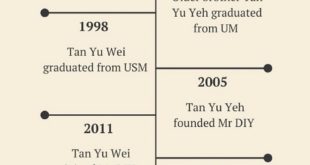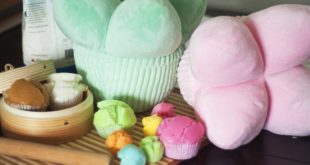The F&B industry in Singapore is very competitive — there are many eateries popping up, and there just as many closing down.
Sometimes the competition between F&B players can get so intense that it results in a literal food fight.
From slashing to opening competing stalls, here are five notorious F&B rivalries in Singapore, with most escalating to court battles.
1. Zam Zam vs Victory Restaurant

The spat between these two popular murtabak places dates all the way back to 2005.
The former boss of Singapore Zam Zam, Zackeer Abbass Khan, and his former employee Liakath Ali Mohamed Ibrahim, used to be business partners.
However, when the business failed, Zackeer blamed Liakath for being “cheated” of S$ 80,000 and tensions continued to rise after the latter joined next-door rival Victory Restaurant, where he assumed the role of a supervisor.
Both restaurants often touted customers to steal business from each other, and things escalated in August 2015 when the police came down to advise them to stop touting.
An argument had broken out between Liakath and Zam Zam employees, who threw threats at him.
Shortly after, Liakath was involved in a slashing incident. Zackeer had allegedly paid S$ 2,000 to the headman of the Sio Ang Koon secret society to slash his face.
The violent act was carried out by another secret society member, which left a permanent 7cm scar on him.
Most recently, Zackeer received fresh charges of committing a rash act and criminal intimidation against another former employee, who also switched over to Victory. This is despite strict conditions for him not to go within a 1km radius of the two eateries.
2. Rochor Original Beancurd
Founded in 1955 by a husband-and-wife team, Rochor Original Beancurd started off as a humble roadside stall.
After the husband’s passing in 1986, his wife and eldest son sold the beancurd dessert in shop units along Selegie and Middle Road.
The second son only joined the business in 1991, mainly working as a server. Between the mid to late ’90s, the family opened their first store at Short Street.
Later on, the youngest son joined the family business after completing his National Service and learnt the beancurd recipe from his eldest brother.
However, he later complained of favouritism as both of them were allegedly not given any shares in the family business. He told The Straits Times that his mother had split the company’s shares with only his second brother as she had “favoured” him.

Disputes over the company shares led the other siblings to open up their own beancurd stalls. The youngest opened Beancurd City right next to the second brother’s store in 2002, while the eldest opened Rochor Beancurd House.
Meanwhile, their only sister later opened Old Rochor Beancurd and Min Traditional Beancurd.
All the siblings’ businesses have since been passed down to their respective children.
3. Lao Ban vs Xiao Ban

Lao Ban is another household name that specialises in cold beancurd. It is founded by elderly couple Li Pui Shing and wife, who opened their first stall at Old Airport Road Food Centre in 2009.
Last year, Li sued his eldest son, who is the co-founder of Xiao Ban.
The young Li had started the beancurd business with his three friends and adopted a similar brand name, logo and packaging as Lao Ban.
For instance, Lao Ban’s logo features an old couple while Xiao Ban’s logo features a young couple.
However, Li stressed that Xiao Ban is not affiliated to Lao Ban in any way, and filed a lawsuit against Xiao Ban over trademark infringement. He also demanded compensation from Xiao Ban for the alleged damage that Lao Ban has incurred.
To emphasise his point, Li highlighted that even Prime Minister Lee Hsien Loong was led into thinking that Xiao Ban and Lao Ban were family companies.
In his National Day Rally Mandarin speech in 2007, PM Lee said that “Lao Ban started Xiao Ban in Vietnam”.
Responding to this, the young Li claimed that he came up with the name ‘Lao Ban’. He added that his sister, who drew and owns the Lao Ban trademark, gave her support to the ‘Xiao Ban’ trademark.
The ownership of Lao Ban trademark was only transferred to the father in 2015.
Xiao Ban also countersued to seek compensation for damages incurred as a result of Lao Ban’s accusation.
Li reportedly gave his permission to his children to use Lao Ban’s branding to expand the business, though he asserted that this is on the condition that they fully own the business.
In contrast, Xiao Ban was co-founded by “outsiders”, though the younger Li was said to only be a minority shareholder.
Li also said that he agreed the younger Li to set up Xiao Ban with his friends only if they do not use this brand name in Singapore. However, Xiao Ban has presence in Singapore as well as overseas markets like Cambodia, Taiwan, Thailand and Vietnam.
4. ENG’s vs ENG’s

There has been a long-standing rivalry between the two ENG’s wanton noodle stores at Tanjong Katong Road.
The original ENG’s Wantan Noodle is founded by Ng Ba Eng, and started out as a pushcart business more than 50 years ago.
When Ng passed away from a heart attack in 2013, the business rebranded to ENG’s Noodle House, and was registered as a company under his son and his investor’s wife.
However, there was a fallout between the two. They went to court, citing problems such as irregularities in the accounts, disputes regarding shareholdings, and disagreements about customer service.
The business ended up getting taken over by Thomas Hong, CEO of soup chain Lao Huo Tang, who is a fan of their noodles. It was renamed to Eng’s Wantan Noodle and co-managed with one of the original business partners.
In 2018, Ng’s son and two daughters set up ENG’s Char Siew Wantan Mee right opposite their store.
Both of them claim to be the ‘original’ — ENG’s Char Siew Wantan Mee even marketed themselves as “The One & Only Original Award-Winning Brand” on its social media pages.
In July, it was reported that Ng’s son has been sued over an alleged conspiracy to “injure” Eng’s Noodles House, causing it to suffer losses by running a “competing wantan noodle business” a few doors away.
The Ngs are countersuing the investor’s wife over her alleged involvement in Eng’s Wantan Noodle, and deceiving the former customers of Eng’s Noodles House that Eng’s Wantan Noodle is the same business started by the Ng family.
5. Original Popular Hock Lam Street Beef Kway Teow vs Hock Lam Street Popular Beef Kway Teow

Hock Lam Street Beef Kway Teow was founded by Tan Chin Sia back in 1921. Using a recipe passed down from his father, Tan set up his first stall along Hock Lam Street.
In July last year, fourth-generation owner Tina Tan announced the unfortunate closure of the business, citing manpower constraints.
Separately, Tan’s two sons — Anthony and Francis Tan — both claim to be the true successors of the business.
Anthony, who is the founder of Original Popular Hock Lam Street Beef Kway Teow, said that he helped his father cook at their stall in Hock Lam Street since he was 12.
Francis on the other hand, claimed that his father’s recipe was passed down to him and that Anthony simply helped to serve customers at the stall.
Francis has also opened his own beef noodles stall called Hock Lam Street Popular Beef Kway Teow.
Business Competition Can Be Healthy Too
While competition is inevitable, it doesn’t mean that it has to be toxic.
We can foster healthy competition instead and encourage each other to better our own brands.
For one, competition leads to innovation. If you’re the only player in your field, it can be difficult to improve. And if you’re working in a crowded market, you won’t succeed by doing what everyone else does.
Healthy competition encourages change which will distinguish your company from others through technology, product alterations or by improving the customer experience.
Featured Image Credit: cavinteo.blogspot.com / Matthew Newkirk via iStockPhoto / roamingglass / Yue Hern.me



